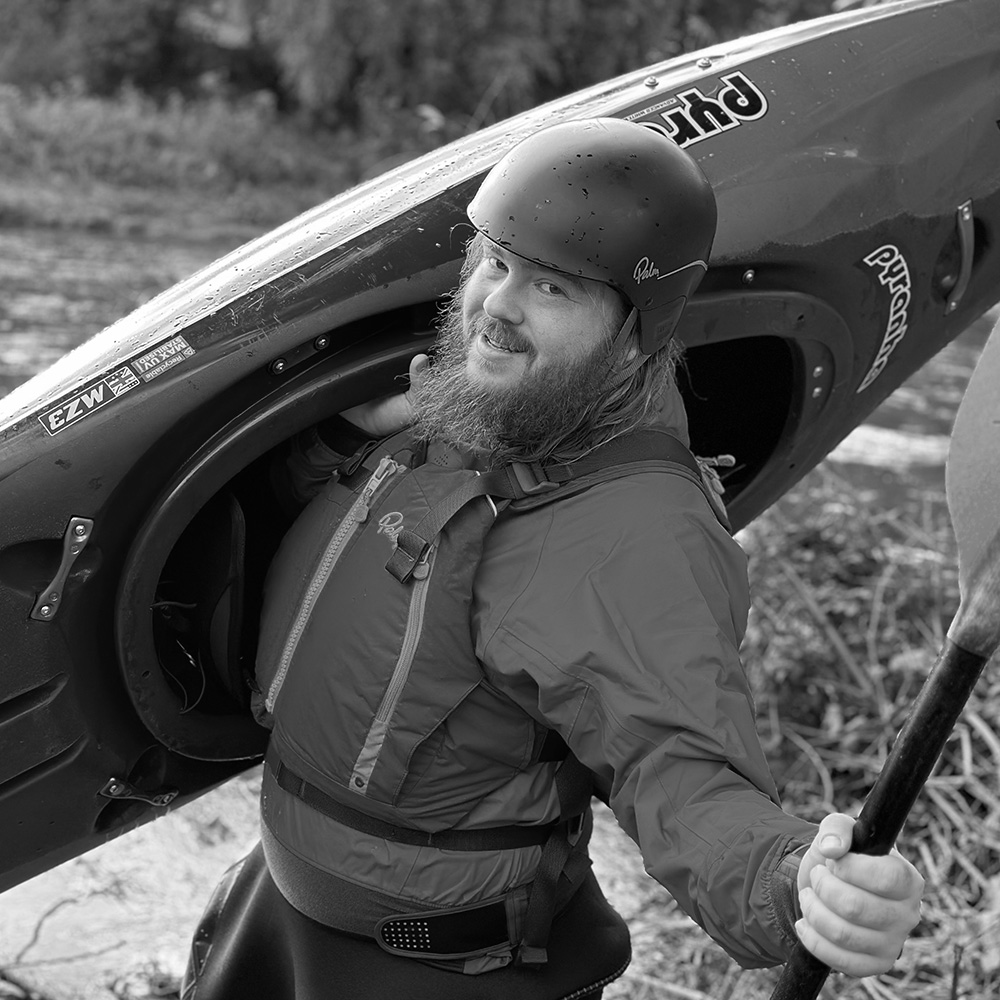During the winter months one of the most regular questions in store is how to keep your hands warm on the water. Thankfully, there are a whole host of potential responses to this query, with options to suit your scenario and budget. The key thing to understand is that each solution will offer a different balance of warmth, paddle feel, ease of entry and cost. As such, the purpose of this blog is to demystify the pros and cons of choosing to wear nothing, gloves, mitts or pogies.
Bare Hands
For many of our customers the ability to retain the perfect paddle feel overrides warmth. If that sounds like you, then bare hands remain the optimal solution. I often go out without gloves and find this acceptable for short sessions. The problems begin when you plan to spend long days on the water, or during strong winds. The effect of wind chill should not be underestimated.
Fingerless Gloves
As your requirement for additional warmth increases, fingerless gloves will likely be your first port of call. As the name suggests, fingerless gloves leave the majority of the fingers exposed whilst protecting the palm and back of the hand. This allows you to do everything you would be capable of without gloves, whilst also having some level of insulation. They are particularly popular with anyone wanting to do rope work. Fingerless options are generally made from a thin material, whether neoprene or polyamide/polyester. This results in excellent feel but this is at the expense of warmth. As such, the benefit of this style of glove is as much about protection from abrasion as it is thermal insulation.
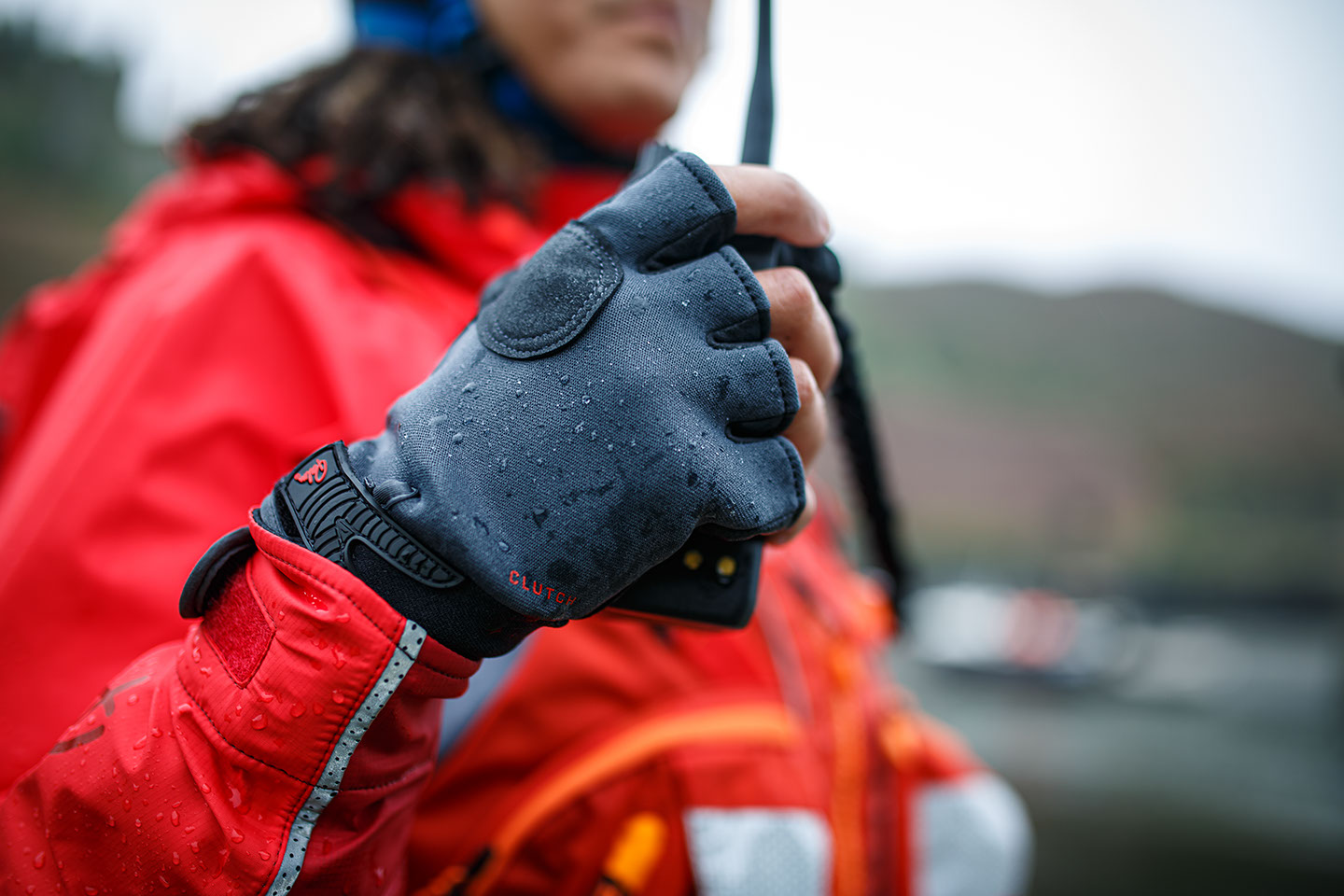
Neoprene gloves
There are many different neoprene gloves on the market, with a wide range of thicknesses, seam constructions, and prices. It can be overwhelming, so we’re here to help by covering the primary factors.
Thickness – This is a key consideration and while neoprene gloves are produced from 1-7mm it is our recommendation not to go above 3mm for paddlesport use. This is because although warmth is improved, you will absolutely ruin the paddle feel, as well as encouraging forearm cramp. Even 3mm can result in challenges, so 2mm is our most popular choice in store.
Seams – When producing neoprene gloves the manufacturer makes a decision to use either a stitch through or glued seam. Neoprene is waterproof, so it makes sense to use a glued seam that reduces cold water ingress. This seam style is often termed as glued and blindstitched (GBS). It means that as well as being glued, the seam is also stitched. A blindstitch doesn’t penetrate the full thickness of the neoprene, thereby stopping the potential for flush. GBS is our recommended seam construction and you should put this on your wish list when selecting a neoprene glove.
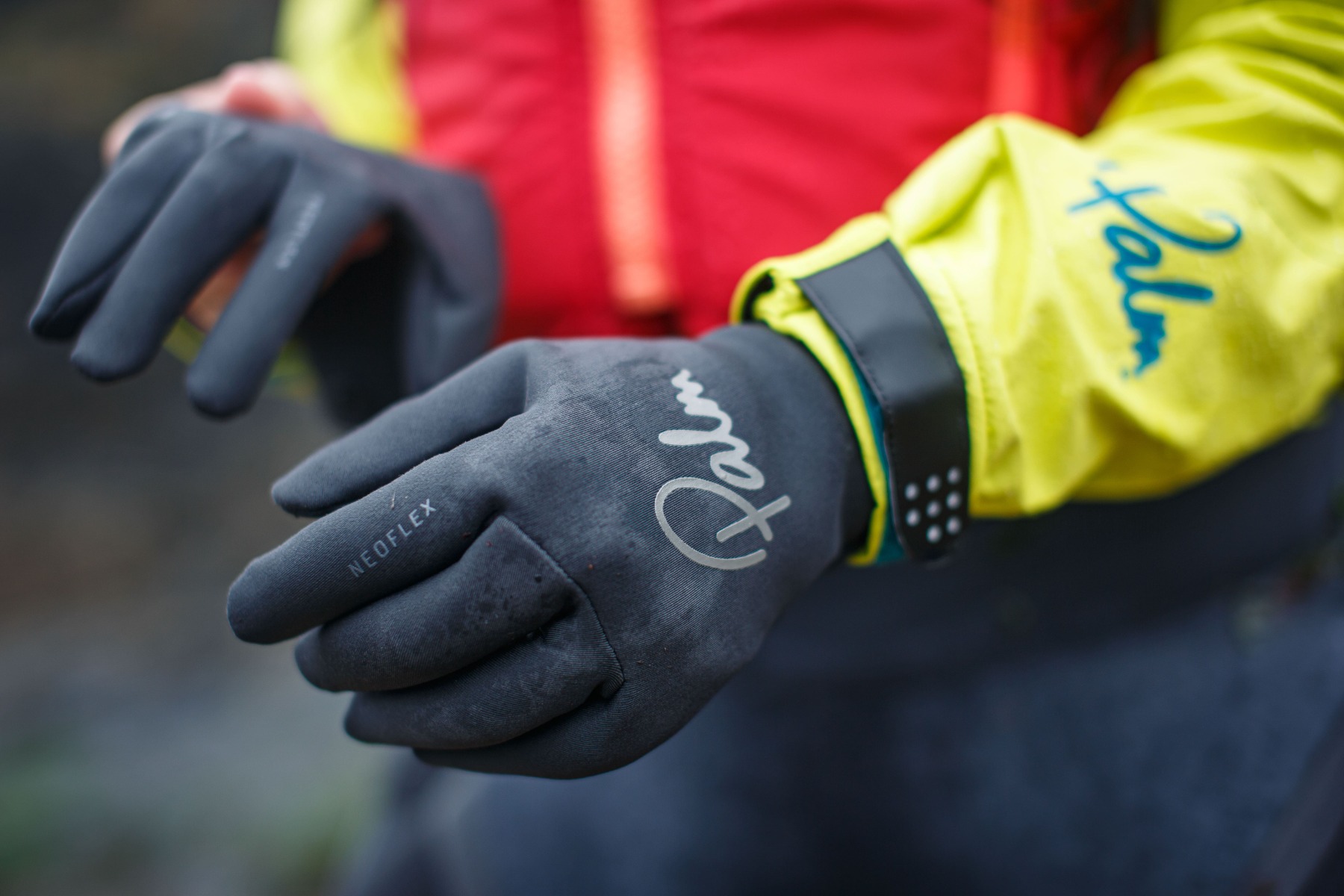
Open Palm Mitts
These sit between pogies and gloves. Perhaps a wildcard choice, but one that is very popular with our staff and customers. Choosing open palm mitts gives you wind chill protection, combined with the thermal insulation of neoprene on the back of the hand. However, unlike traditional neoprene gloves you have the desired direct contact with the paddle. Of course, cold water floods the mitt when your hands are in the water but this can then rapidly drain away, rather than being trapped inside. Many customers prefer open palm mitts over pogies thanks to the lack of restriction. They allow you to quickly move your hands around the paddle and you can even fold the mitt off the back of your hand when conditions necessitate. Open palm mitts will never offer the same thermal insulation as a full glove but the extra paddle feel quite often makes this an acceptable compromise.
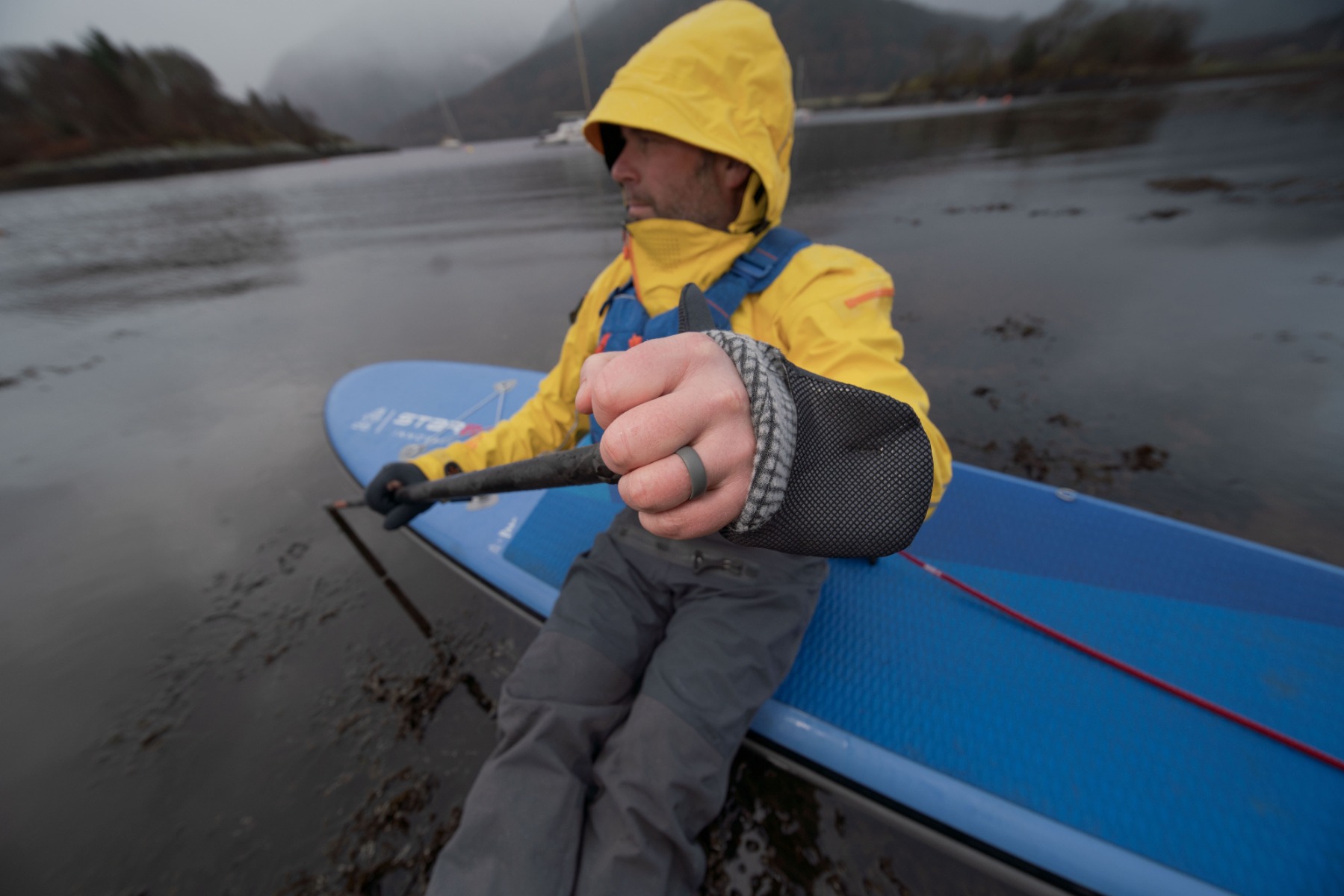
Pogies
Again, this is an interesting choice and likely not one you would be familiar with as a non kayaker. Pogies are essentially mitts that wrap around the paddle. This means your bare hand is actually in contact with the paddle shaft, allowing you to maintain that feeling of connection and control. Different pogies will offer varying levels of warmth depending on the thickness and material used. Super light fabric version will mainly benefit you from a wind chill perspective, while neoprene and thermal lined version offer more inherent warmth. I consider this option to be kayak specific. The shape of pogies does not lend itself to being used on the top of a canoe or sup paddle.
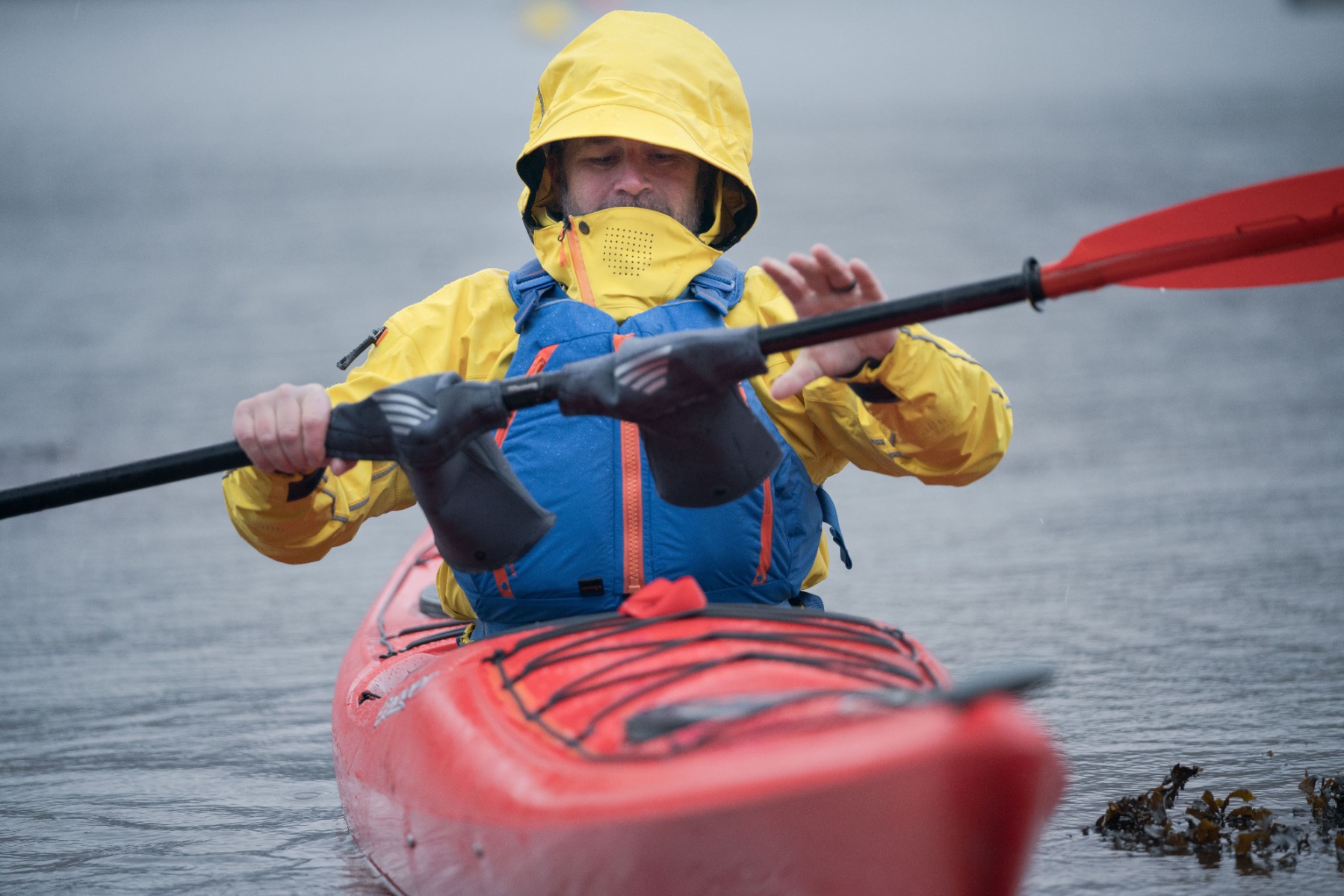
I hope this has been a useful summary of the relative merits of different options to protect your hands when winter paddling. Of course, if you need more information, or a recommendation that is tailored towards your specific scenario, then I would encourage you to get in touch.
You can see our full range of paddling gloves, mitts and pogies here.
Steve















